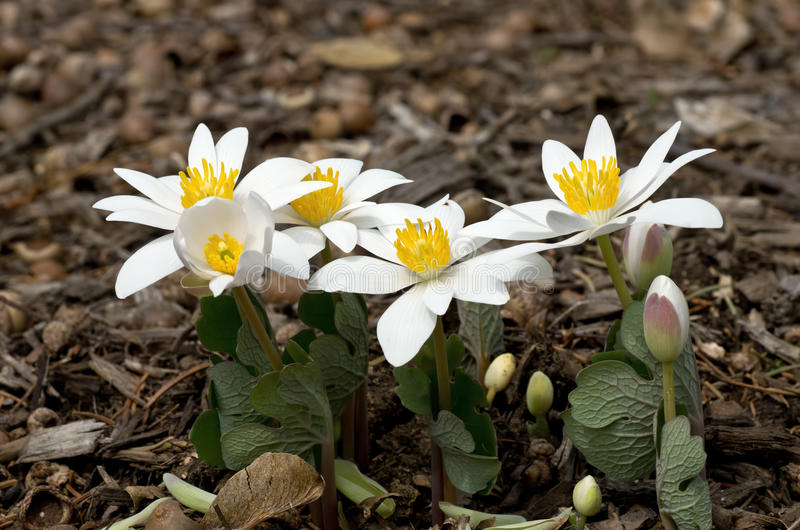A favorite spring ephemeral: Bloodroot

MILAN, Ill. — My family dedicates an entire weekend to a walkabout in our woodlands each spring.
The timing of the retreat is not left to chance, we mark it on the calendar far in advance and decline all invitations and events for that weekend. We do this to celebrate spring’s arrival, disconnect from the world for a bit, and reconnect as a family.
We also have individual ulterior motives. My kids are often looking for critters and miscellaneous woodland treasures. My husband has his eye out for morel mushrooms, and I am always distracted by the spring ephemerals. These early-to-bloom plants are such a welcomed sign of spring and serve an important ecological role. Among the myriad of spring blooms, few thrill me as much as bloodroot (Sanguinaria canadensis).
Bloodroot is one of the earliest blooming plants in Illinois woodlands. A single, white bloom emerges wrapped in a single leaf from a rhizome. Blossoms do not produce nectar but rely on small bees and flies to transport pollen from flower to flower during a short bloom period. Once pollination has occurred, blooms mature into seed heads that contain more than a dozen small seeds.
A unique feature of the bloodroot seed is the presence of an organ called an elaiosome. This fleshy structure is rich in fats and proteins that are attractive to ants. As ants harvest the elaiosome as a food source, they also transport the seeds to new environments thereby spreading the species.
The leaves of the bloodroot are multilobed and unfurl from around the flower stalk once pollination has occurred. The leaves continue to photosynthesize until the woodland overstory has emerged and shade out the woodland floor. The plants then disappear in the landscape, waiting until the next early spring months to reawaken them.
Bloodroot gets its common name from the red sap the plant exudes if cut. All parts of the plant exude a red-colored sap, but this is especially true of the tuberous roots. Indigenous groups including the Cherokee, Chippewa, Iroquois, Menominee, Meskwaki, Ojibwa, Potawatomi, and Winnebago used the sap as a dye.
Bloodroot is a suitable plant for the home landscape where conditions provide morning sun, afternoon shade, and the soil is moist yet well-drained with high levels of organic matter. Bloodroot is tolerant of a wide range of soil pH, but like many woodland flowers, it prefers slightly acidic soils.
Plants or seeds should be obtained from reputable sources. Wild harvesting or collecting should not be done from wild populations.
For a naturalized appearance, plant bloodroot with other native wildflowers such as Virginia bluebells (mertensia virginica), spring beauties (claytonia virginica), woodland phlox (Phlox divaricata) and wild ginger (asarum canadense).
Miss Clipping Out Stories to Save for Later?
Click the Purchase Story button below to order a print of this story. We will print it for you on matte photo paper to keep forever.

